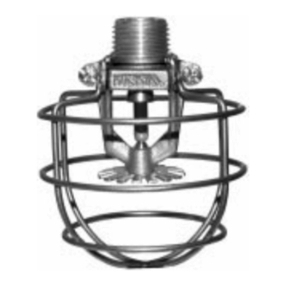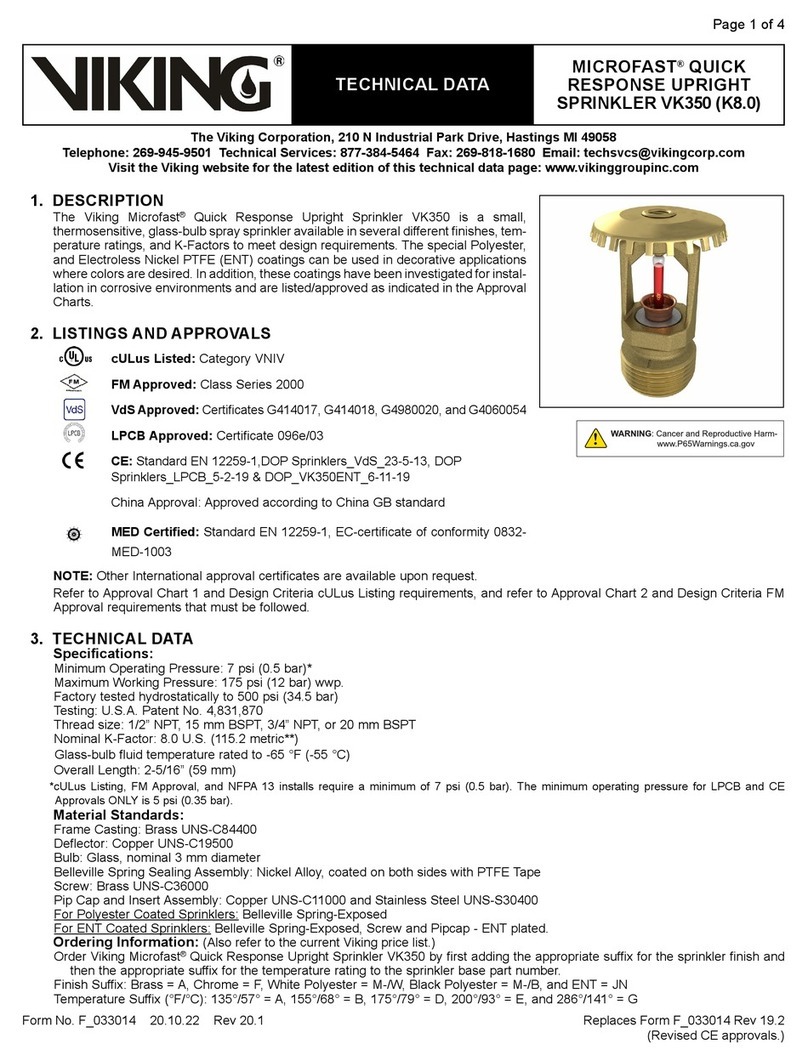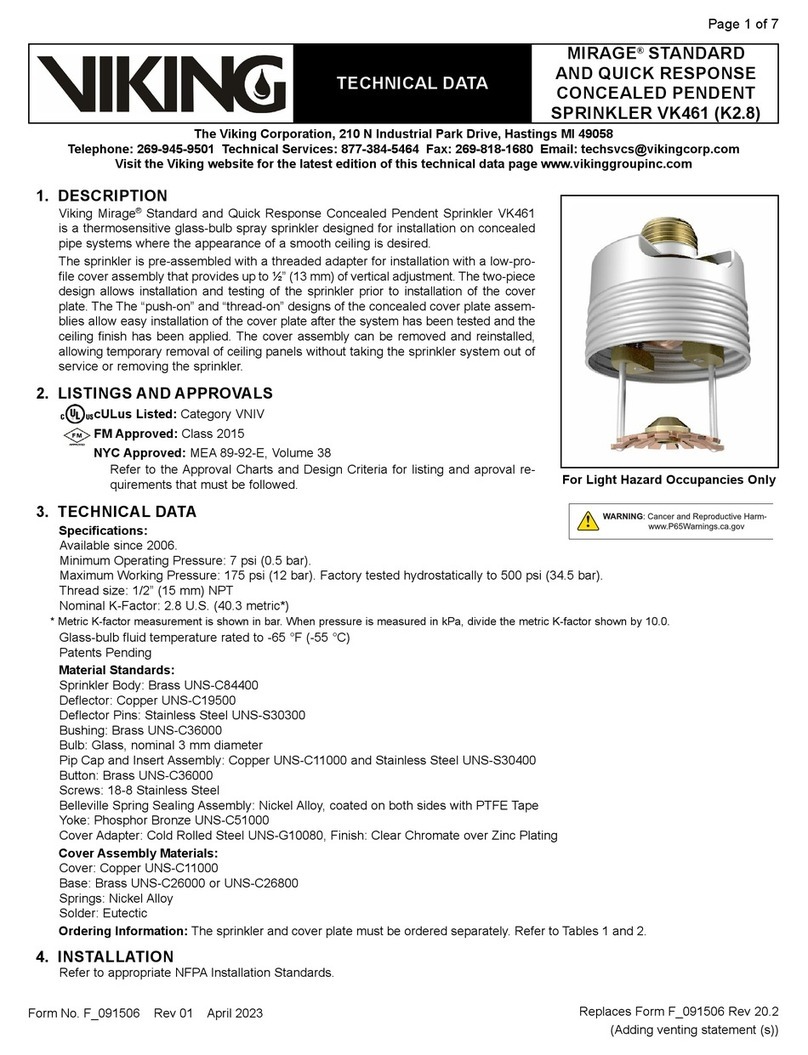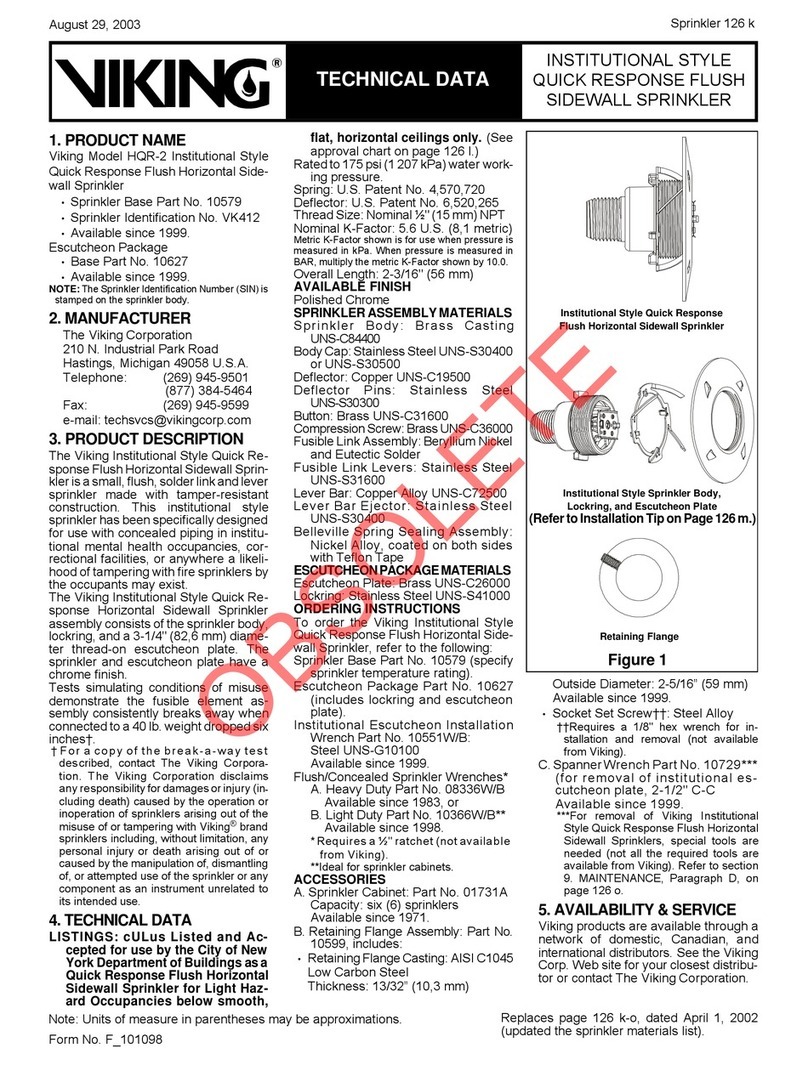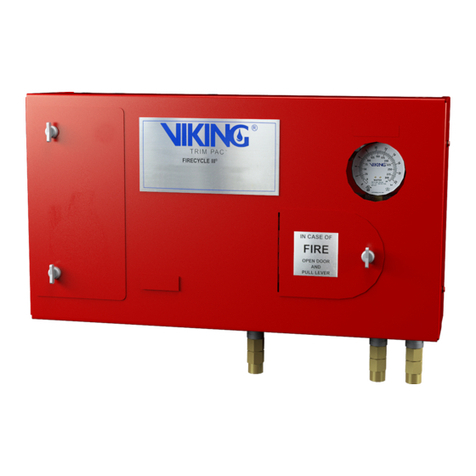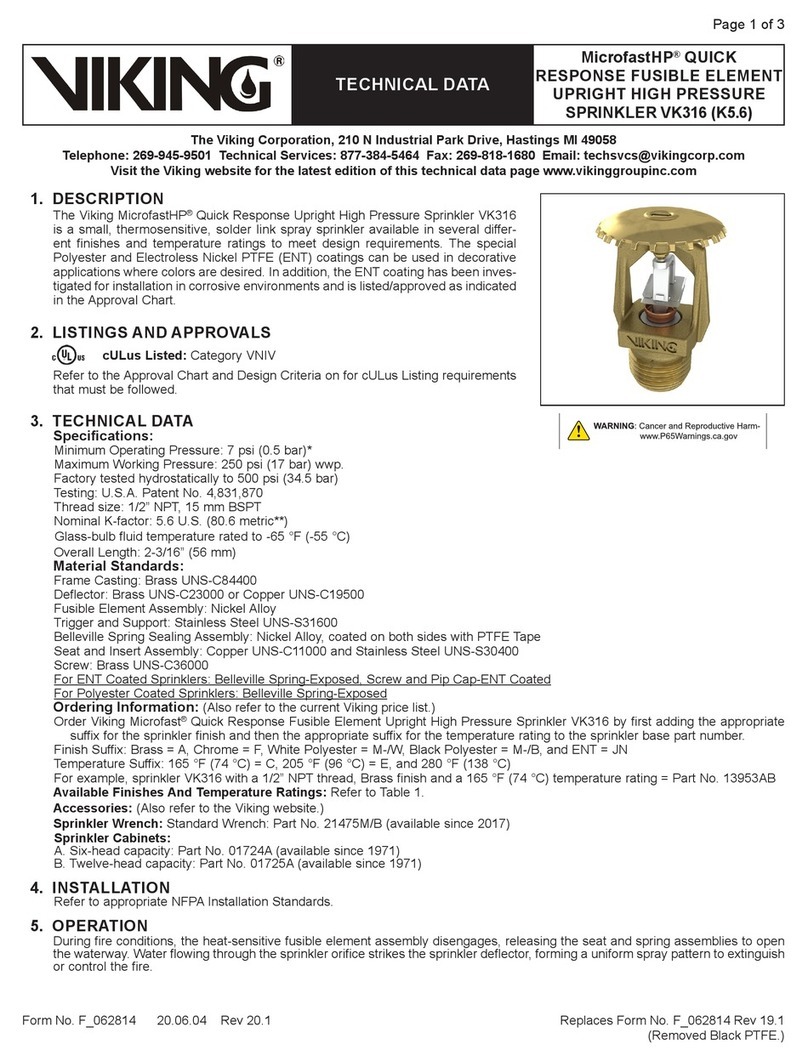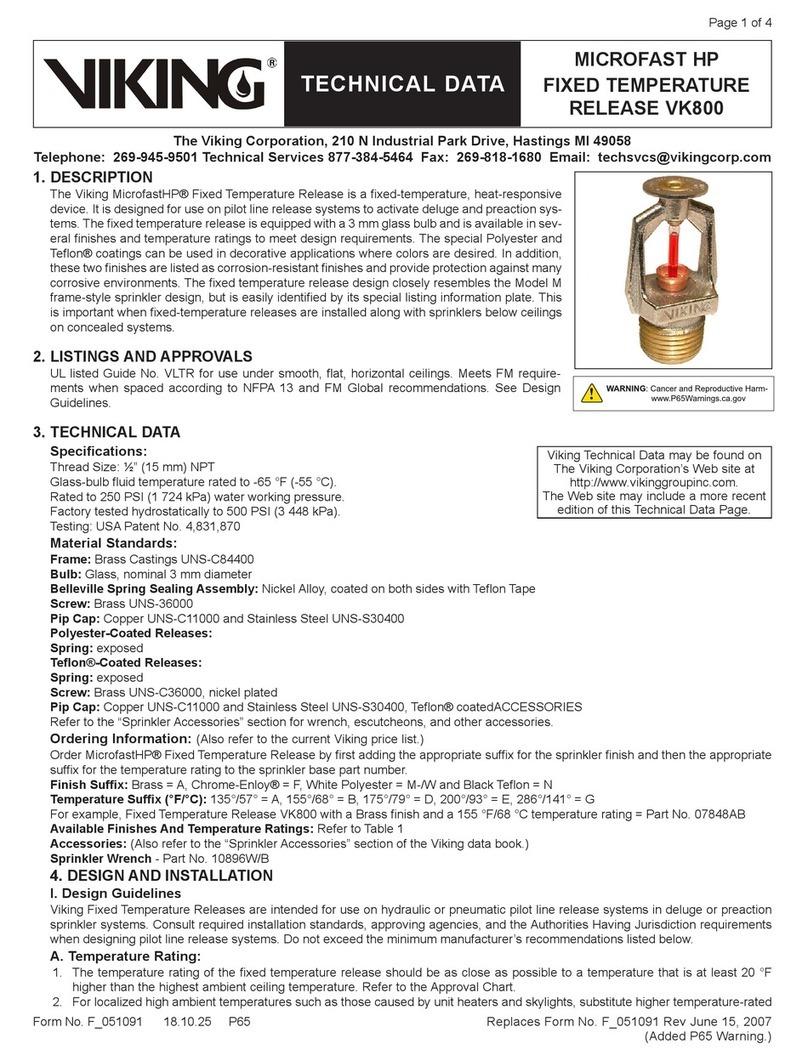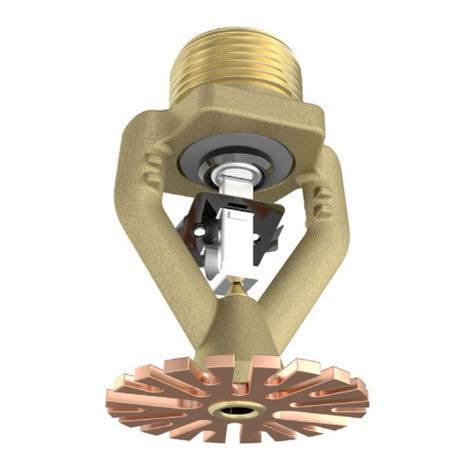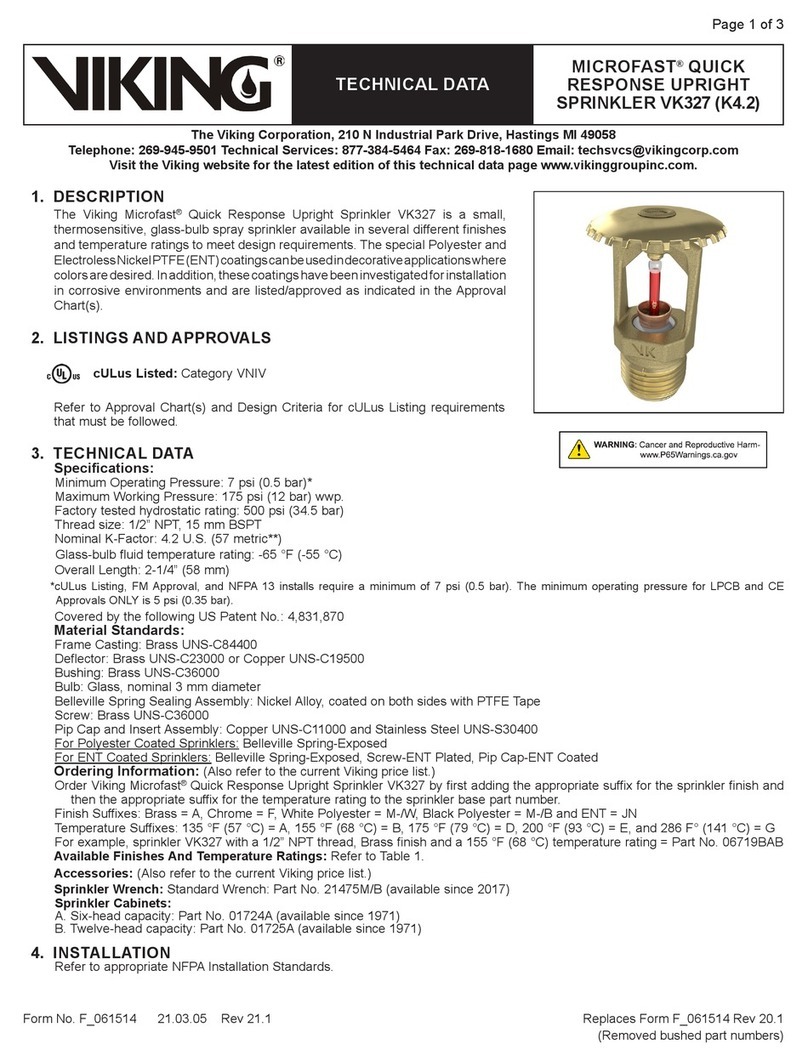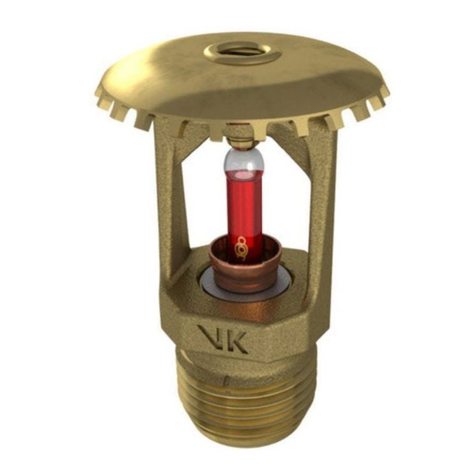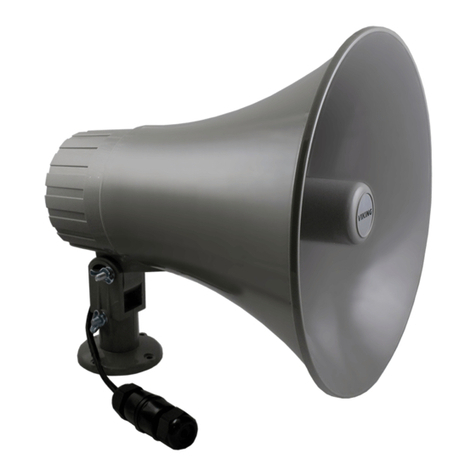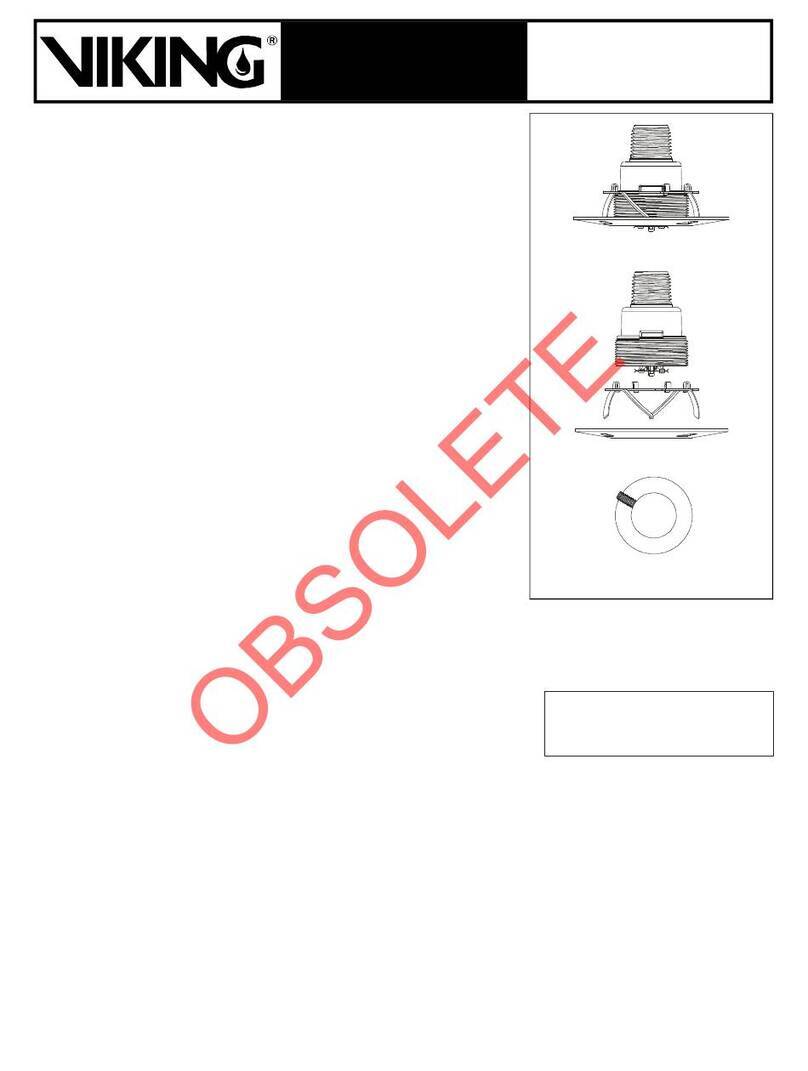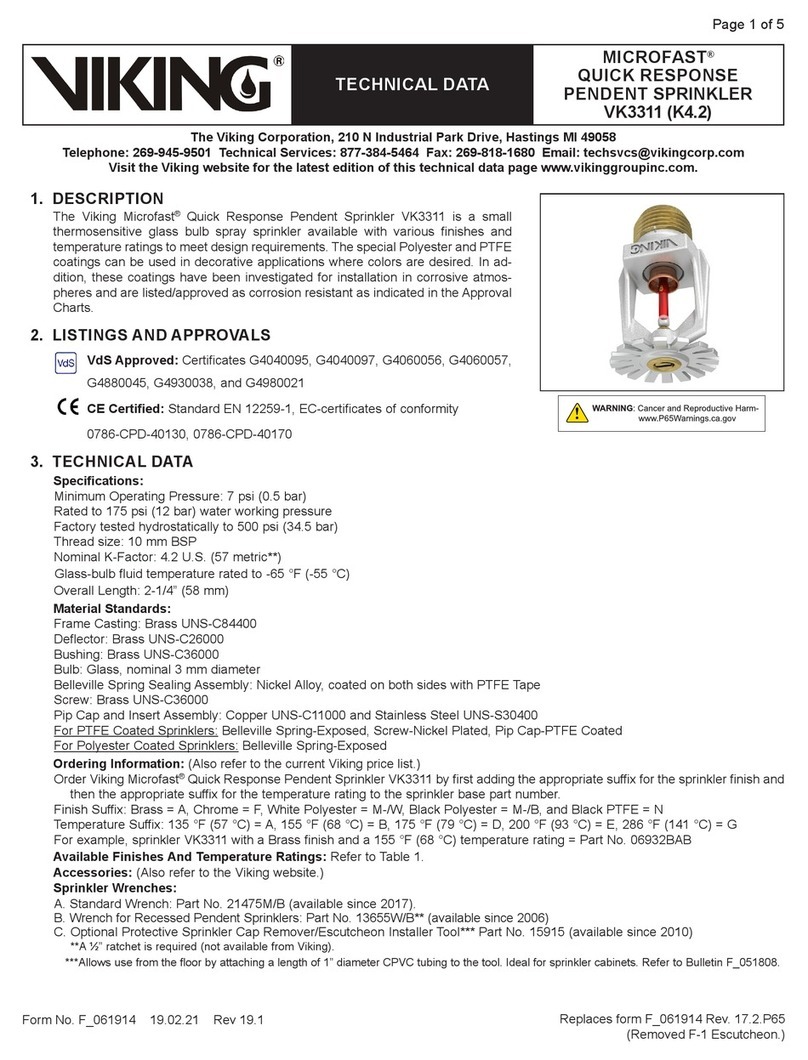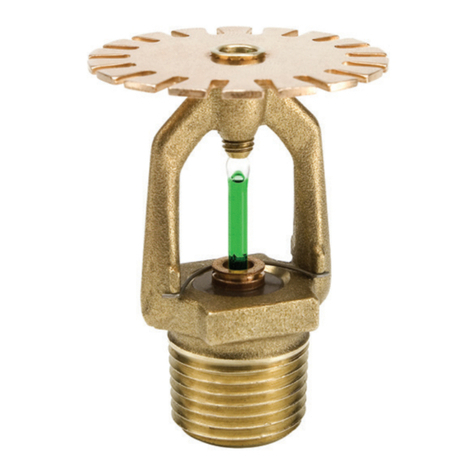
Sidewall Sprinklers are not intended
for use in corrosive environments.
D. Use care when locating sprinklers
near fixtures that can generate heat.
Do not install sprinklers where they
will be exposed to temperatures that
exceed the maximum recommended
ambient temperature for the temper-
ature rating used.
E. Sprinklers must be protected from
mechanical damage. Adequate heat
must be provided when sprinklers
are installed on wet-pipe systems.
F. Before installation, be sure to have
the appropriate sprinkler model and
style, with the correct orifice size,
temperature rating, and response
characteristics.
DEFLECTOR LOCATION:
Microfast®Model M-5 Residential
Horizontal Sidewall Sprinklers must
be installed only below smooth, flat,
horizontal ceilings or sloped ceilings
allowed by the listing.
For any area of coverage below a
smooth, flat, horizontal ceiling, these
sprinklers mustbe installed with the
deflectors located 6" to 12" (152 mm
to 305 mm) below the ceiling.
Microfast®Model M-5 Residential
Horizontal Sidewall Sprinklers to be
locatedonthesideofaslopedceiling
with spray directed across the slope
mustbe installed with their deflec-
tors6"to12"(152mmto305mm)be-
low the ceiling for any area of cover-
age.
Microfast®Model M-5 Residential
Horizontal Sidewall Sprinklers to be
locatedatthepeakofaslopedceiling
with spray directed down the slope
must be installed with the deflectors
6" (152 mm) below the ceiling for any
area of coverage.
Always align the top of the horizontal
sidewalldeflectorsparalleltotheceil-
ingor roof. Thesprinklers must bein-
stalled after the piping is in place to
prevent mechanical damage.
1. Install escutcheon (if used), which
is designed to thread onto the ex-
ternalthreadsofthe sprinkler. Re-
fer to the “Sprinkler Accessories”
section of the Viking Engineering
and Design Databook for techni-
cal data on approved escutch-
eons and other accessories.
2. Apply a small amount of pipe-joint
compound or tape to the external
threads of the sprinkler only, tak-
ing care not to allow a build-up of
compound in the sprinkler inlet.
3. Install the sprinkler on the piping
usingthe special sprinklerwrench
only, taking care not to over
tighten or damage the sprinkler
operating parts. DO NOT use the
sprinkler deflector to start or
thread the sprinkler into a fitting.
G. After installation, the entire sprinkler
systemmustbetestedinaccordance
with the recognized installation stan-
dards. The test is applied after sprin-
kler installation to ensure that no
damagehasoccurredtothesprinkler
during shipment and installation, and
to make sure the unit has been prop-
erlytightened.Ifathreadleakoccurs,
normally the unit must be removed,
new pipe-joint compound or tape ap-
plied, and then reinstalled. This is
duetothefactthatwhenthejointseal
leaks, the sealing compound is
washed out of the joint.
8. MAINTENANCE
NOTICE:The owner is responsible for
maintaining the fire-protection system
and devices in proper operating condi-
tion. For minimum maintenance and in-
spection requirements, refer to the Na-
tional Fire Protection Association’s
pamphlet that describes care and main-
tenance of sprinkler systems. In addi-
tion, the Authority Having Jurisdiction
may have additional maintenance, test-
ing, and inspection requirements that
must be followed.
A.Thesprinklersmustbeinspectedona
regular basis for signs of corrosion,
mechanical damage, obstructions,
paint, etc. The frequency of the in-
spections may vary due to corrosive
atmospheres, water supplies, and
activity around the device.
B. Sprinklers that have been field
painted, caulked, or mechanically
damaged must be replaced immedi-
ately. Sprinklers showing signs of
corrosion shall be tested and/or re-
placed immediately as required.
Microfast® Model M-5 Residential
Horizontal Sidewall Sprinklers that
are 20 years old shall be tested
and/or replaced immediately as re-
quired. Never attempt to repair or re-
assemble a sprinkler. Sprinklers that
have operated cannot be reassem-
bled or re-used, but must be re-
placed. When replacing sprinklers,
useonlynewsprinklerswithidentical
performance characteristics.
C. The sprinkler discharge pattern is
critical for proper fire protection.
Nothing should be hung from, at-
tached to, or otherwise obstruct the
discharge pattern of the sprinkler. All
obstructionsmustbeimmediatelyre-
moved or, if necessary, additional
sprinklers installed.
D. When replacing existing sprinklers,
the system must be removed from
service.Refertotheappropriate sys-
tem description and/or valve instruc-
tions. Prior to removing the system
from service, notify all Authorities
Having Jurisdiction. Consideration
should be given to employment of a
fire patrol in the effected area.
1. Remove the system from service,
drain all water, and relieve all
pressure on the piping.
2. Using the special sprinkler
wrench, remove the old sprinkler
and install the new unit. Care
must be taken to ensure that the
replacement sprinkler is the
proper model and style, with the
correct orifice size, temperature
rating, and response characteris-
tics.A fully stockedsprinkler cabi-
net should be provided for this
purpose.
3. Place the system back in service
and secure all valves. Check and
repair all leaks.
E. Sprinkler systems that have been
subjected to a fire must be returned
to service as soon as possible. The
entire system must be inspected for
damage,andrepairedorreplacedas
necessary. Sprinklers that have
been exposed to corrosive products
of combustion or high ambient tem-
peratures, but have not operated,
should be replaced. Refer to the Au-
thority Having Jurisdiction for mini-
mum replacement requirements.
May 27, 1999
Sprinkler 142 k
TECHNICAL DATAMicrofast®MODEL M-5
RESIDENTIAL HORIZONTAL
SIDEWALL SPRINKLER

